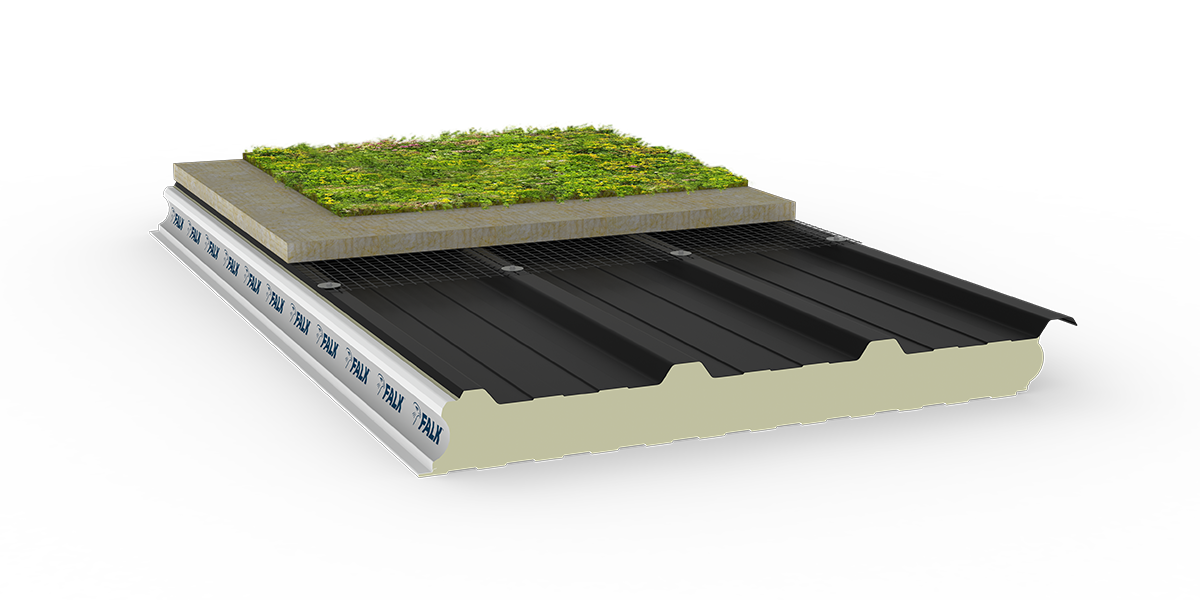


Product applications
Sandwich panels are the perfect base for your green roof system because they provide a good, insulating substructure.
Sedum is a common type of succulent plant used for green roofs because of its low maintenance requirements and ability to withstand extreme weather conditions.
Sedum is a genus of flowering plants in the Crassulaceae family that includes thousands of varieties. A sedum plant stores water in its leaves and is very low maintenance.

To install a green roof with sedum you need special techniques and materials, such as a waterproof substrate and a special irrigation system. The result? A sustainable and aesthetic green roof.
From FALK we have good experiences with the sedum roofs of our partner SemperGreen from Odijk. Sempergreen is the world's largest grower and supplier of green roof systems. Years of experience, wonderful projects and local nurseries guarantee the very best project results. The pre-cultivated vegetation blankets from our own nursery immediately provide full vegetation on the roof. After installation, this immediately creates a green and sustainable result.
Tip: Sedum roofs also contribute to water management in your neighbourhood. For this reason, many municipalities even offer subsidies for installing green roofs – making it an even more attractive option! Check your local municipality’s website to check the terms and conditions.
Growing sedum blankets requires expertise and experience, and you also need to use the right materials and methods. Growers produce long mats using a mixture of different sedum species, which can be easily rolled out on roofs. This is how your green roof garden is created. But there is still quite a long way to go before you can start to enjoy the end result.
FALK insulated panels are available in almost every colour imaginable. In most cases, the exterior skin is finished with a high-quality coating manufactured by Tata Steel (Colorcoat HPS200 Ultra® or Colorcoat Prisma®); the standard finish for the interior skin is FALK Off-White. This is similar to RAL 9002. But you can also select your own colour from the colour library. Discover all our colours on this page. Here you can also request a colour sample!
FALK insulated roof panels are available with a cutback; this is a standard production option. You can choose the length of the cutback yourself, which generally varies between 25mm and 300mm.
Yes! Use our FALKULATOR to calculate the exact span of your project. If you need advice on mounting solar panels on insulation panels, get in touch! We would be more than happy to talk you through your options.
Get in touch to discuss your project!
Rene Warring
Sales
My request
Add colour samples and/or product samples now to start your enquiry.
Request colour samplesEnter your name and e-mail address once. Then you will have unlimited access to all FALK downloads, whenever you want!


